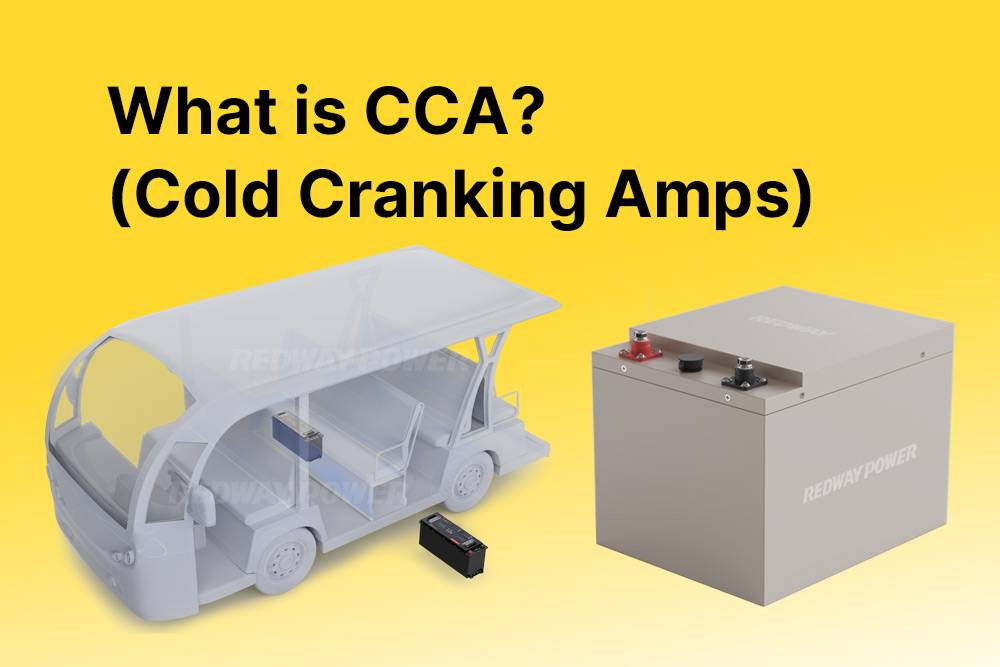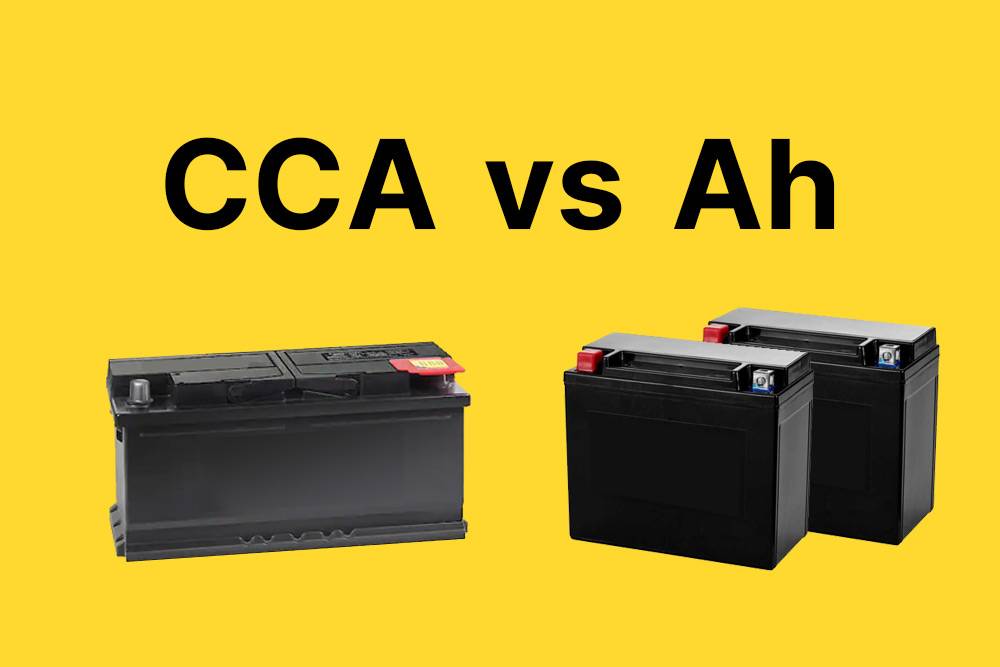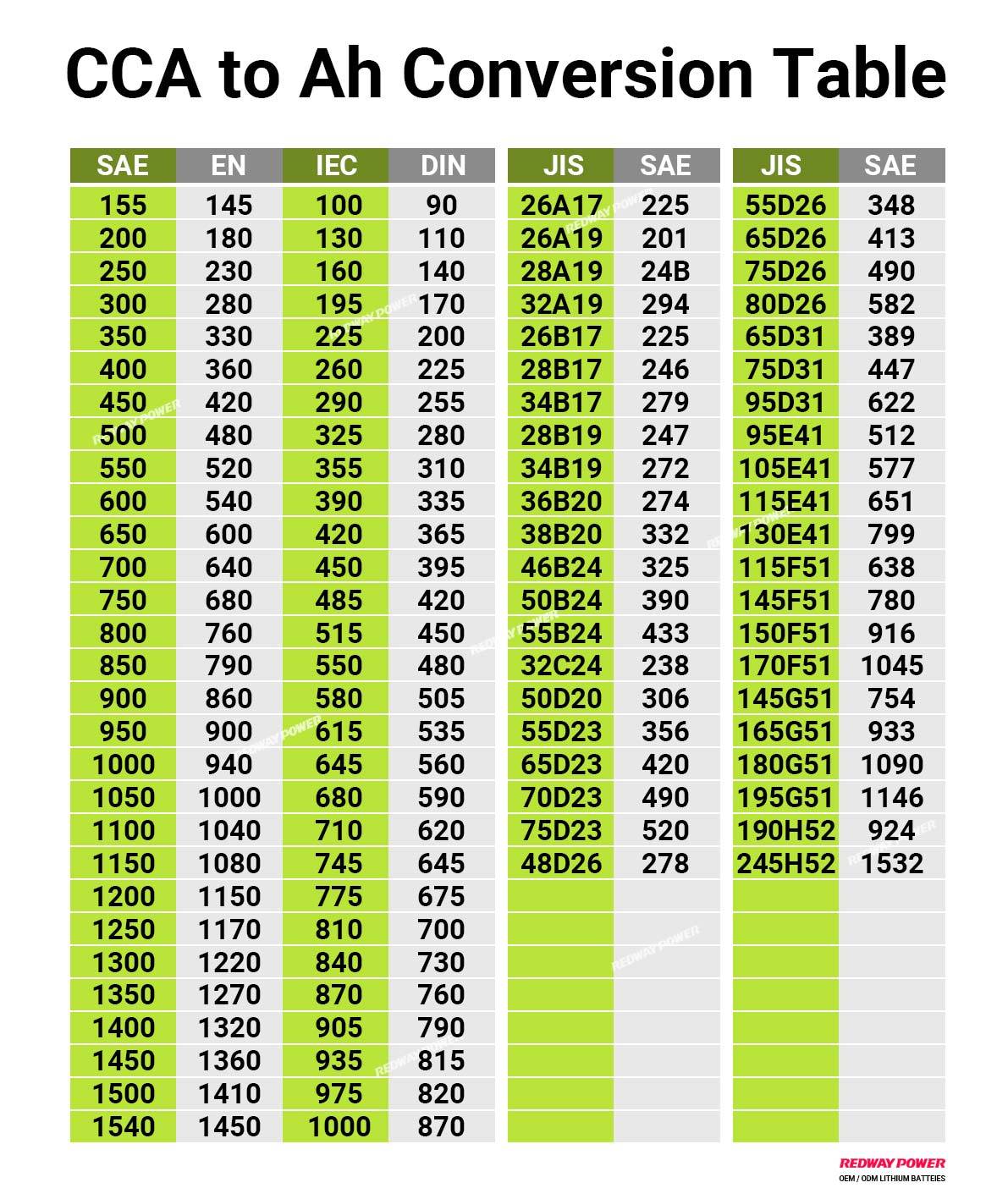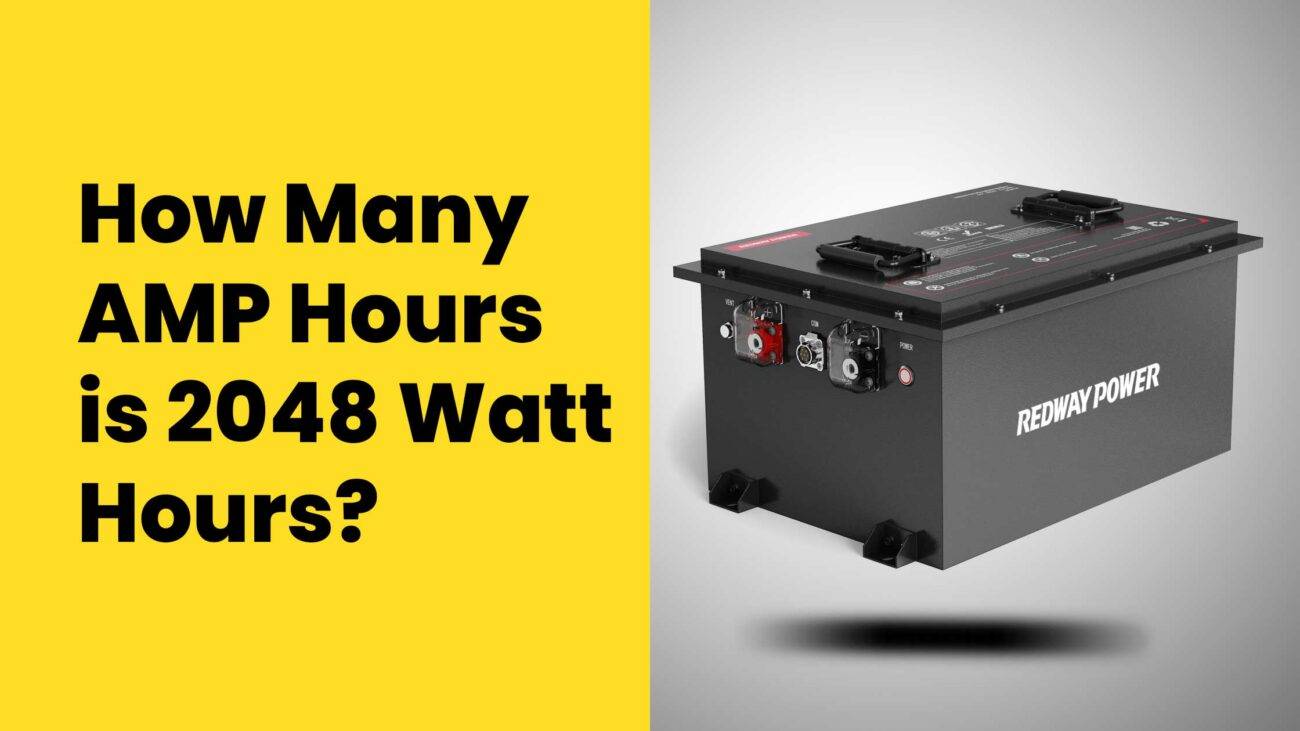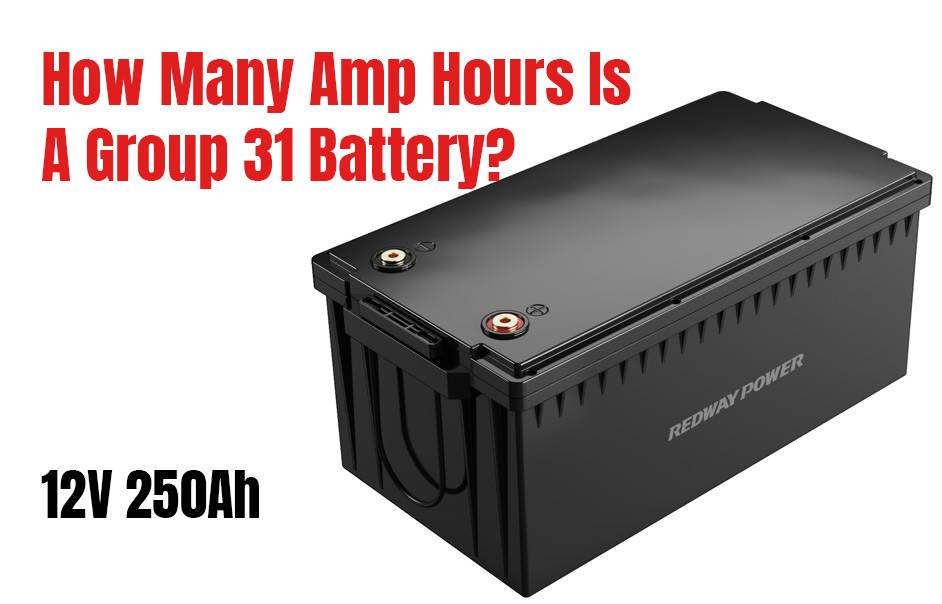- Forklift Lithium Battery
-
48V
- 48V 210Ah
- 48V 300Ah
- 48V 420Ah (949 x 349 x 569 mm)
- 48V 420Ah (950 x 421 x 450 mm)
- 48V 456Ah
- 48V 460Ah (830 x 630 x 590 mm)
- 48V 460Ah (950 x 421 x 450 mm)
- 48V 460Ah (800 x 630 x 600 mm)
- 48V 460Ah (820 x 660 x 470 mm)
- 48V 500Ah
- 48V 560Ah (810 x 630 x 600 mm)
- 48V 560Ah (950 x 592 x 450 mm)
- 48V 600Ah
- 48V 630Ah
-
48V
- Lithium Golf Cart Battery
- 12V Lithium Battery
12V 150Ah Lithium RV Battery
Bluetooth App | BCI Group 31
LiFePO4 Lithium
Discharge Temperature -20°C ~ 65°C
Fast Charger 14.6V 50A
Solar MPPT Charging - 24V Lithium Battery
- 36V Lithium Battery
- 48V Lithium Battery
-
48V LiFePO4 Battery
- 48V 50Ah
- 48V 50Ah (for Golf Carts)
- 48V 60Ah (8D)
- 48V 100Ah (8D)
- 48V 100Ah
- 48V 100Ah (Discharge 100A for Golf Carts)
- 48V 100Ah (Discharge 150A for Golf Carts)
- 48V 100Ah (Discharge 200A for Golf Carts)
- 48V 150Ah (for Golf Carts)
- 48V 160Ah (Discharge 100A for Golf Carts)
- 48V 160Ah (Discharge 160A for Golf Carts)
-
48V LiFePO4 Battery
- 60V Lithium Battery
-
60V LiFePO4 Battery
- 60V 20Ah
- 60V 30Ah
- 60V 50Ah
- 60V 50Ah (Small Size / Side Terminal)
- 60V 100Ah (for Electric Motocycle, Electric Scooter, LSV, AGV)
- 60V 100Ah (for Forklift, AGV, Electric Scooter, Sweeper)
- 60V 150Ah (E-Motocycle / E-Scooter / E-Tricycle / Tour LSV)
- 60V 200Ah (for Forklift, AGV, Electric Scooter, Sweeper)
-
60V LiFePO4 Battery
- 72V~96V Lithium Battery
- Rack-mounted Lithium Battery
- E-Bike Battery
- All-in-One Home-ESS
- Wall-mount Battery ESS
-
Home-ESS Lithium Battery PowerWall
- 24V 100Ah 2.4kWh PW24100-S PowerWall
- 48V 50Ah 2.4kWh PW4850-S PowerWall
- 48V 50Ah 2.56kWh PW5150-S PowerWall
- 48V 100Ah 5.12kWh PW51100-F PowerWall (IP65)
- 48V 100Ah 5.12kWh PW51100-S PowerWall
- 48V 100Ah 5.12kWh PW51100-H PowerWall
- 48V 200Ah 10kWh PW51200-H PowerWall
- 48V 300Ah 15kWh PW51300-H PowerWall
PowerWall 51.2V 100Ah LiFePO4 Lithium Battery
Highly popular in Asia and Eastern Europe.
CE Certification | Home-ESS -
Home-ESS Lithium Battery PowerWall
- Portable Power Stations
Convert Cold Cranking Amps (CCA) to Amp Hours (Ah): A Simple Guide
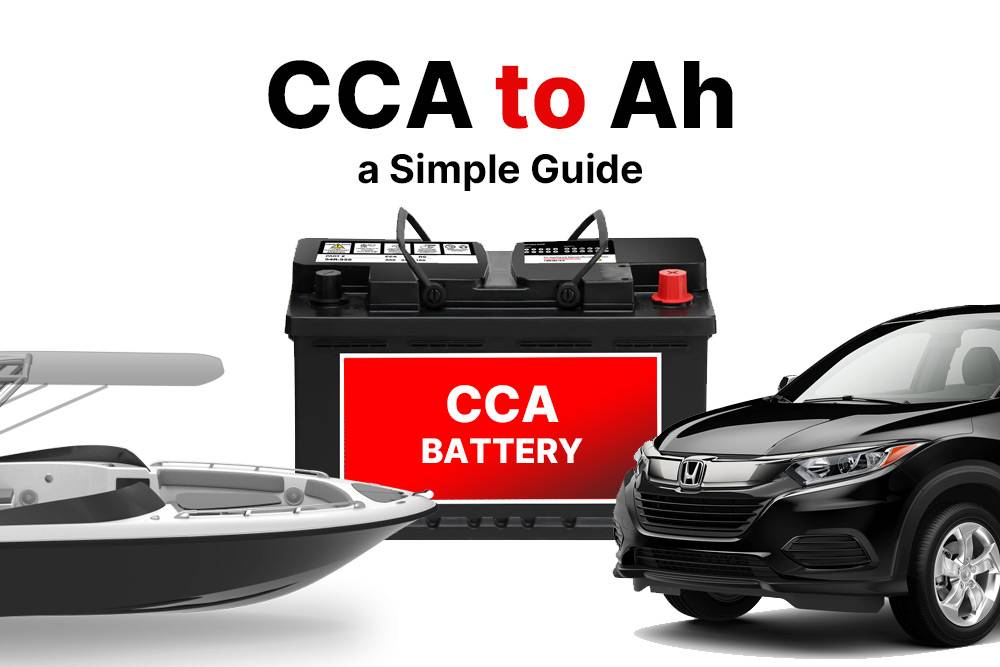
Here we talk about what are cold cranking amps in a battery, and differences between cold cranking and cranking amps. Understanding the conversion between Cold Cranking Amps (CCA) and Amp Hours (Ah) is essential for selecting the right battery for your needs. CCA measures a battery’s ability to start an engine in cold conditions, while Ah indicates its total capacity over time. This article provides a comprehensive guide on how to convert these two important metrics.
Get Your Custom B2B Quote for CCA Starter Battery: Click HERE.
Cold Cranking Amps (CCA) to Amp Hours (Ah) Cross Reference Chart (B2C)
A Cold Cranking Amps (CCA) to Amp Hours (Ah) Cross Reference Chart displays the relationship between CCA and Ah ratings for different battery groups. It provides CCA and Ah values for various battery types, such as starting/cranking and dual-purpose batteries, helping users choose the appropriate battery for their needs based on their CCA and Ah requirements.
Below is a cross-reference chart showing average Cold Cranking Amps (CCA) and Amp Hours (Ah) values for starting, dual-purpose, and deep cycle batteries used in applications such as cars, RVs, marine vessels, and light industrial equipment, organized by their BCI group:
| BCI Battery Group | Starting / Cranking | Dual Purpose | Deep Cycle |
| Group 8D | – | 220 Ah, 1450 CCA | 250 Ah, – |
| Group 22NF | 55Ah, 500 CCA | 60Ah, 745 MCA | 55 Ah, – |
| Group 24 | – | 76 Ah, 840 CCA | 85 Ah, – |
| Group 26 | 50Ah, 550 CCA | – | – |
| Group 27 | – | 90 Ah, 900Ah | 100Ah, – |
| Group 31 | – | 100 Ah, 1000 CCA | 120 Ah, – |
| Group 34/78 | 50 Ah, 800 CCA | 65 Ah, 850 CCA | – |
| Group 35 | 44 Ah, 720 CCA | 60 Ah, 740 CCA | – |
| Group 47 (H5, L2, 55L2) | 60 Ah, 600 CCA | 50 Ah, – | – |
| Group 48 (H6, L3, 66L3) | 70 Ah, 760 CCA | 70 Ah, 750 CCA | – |
| Group 49 (H8, L5, 88L5) | 92 Ah, 850 CCA | 90 Ah, 850 CCA | – |
| Group 51 (51R) | – | 60 Ah, 700 CCA | 60 Ah, – |
| Group 58 (58R) | 50Ah, 550 CCA | – | – |
| Group 65 | – | 75 Ah, 850 CCA | – |
| Group 75 | 55 Ah, 760 CCA | 55 Ah, 750 CCA | – |
| Group 94R | – | 80 Ah, 800 CCA | – |
| Group YTX5L-BS | 4 Ah, 70 CCA | – | – |
| Group YTX20L-BS | 18 Ah, 270 CCA | – | – |
| Group YTX24HL-BS | 21 Ah, 330 CCA | – | – |
| Group YTX30L-BS | 30 Ah, 385 CCA | – | – |
Note:
The provided formats are generally true for lead-acid batteries and are used to estimate the Cold Cranking Amps (CCA) based on the Amp Hours (Ah) capacity. However, they may not directly apply to lithium batteries due to differences in chemistry and construction.
In general, the relationship between Cold Cranking Amps (CCA) and Amp Hours (Ah) depends on the battery type and typically follows these general trends:
– starting lead-acid batteries: Capacity (Ah) x (12 to 16 times) = CCA (Amps)
– dual-purpose lead-acid batteries: Capacity (Ah) x (8 to 12 times) = CCA (Amps)
– deep-cycle lead-acid batteries: Capacity (Ah) x (4 to 8 times) = CCA (Amps)
Note: Many manufacturers officially restrict the maximum current of their deep-cycle batteries, emphasizing that they are not intended for high current applications.
However, it’s essential to recognize that these relationships are approximate guidelines. Actual values can vary based on battery construction, chemistry, and specific manufacturer specifications. Always consult the battery’s documentation for precise information regarding its capacity and CCA ratings.
For an accurate assessment of capacity and CCA dependencies, it’s essential to refer to the battery’s documentation. These values should be viewed as rough guidelines and may vary depending on specific battery models and manufacturers.
Best Lithium CCA Batteries OEM Manufacturer 2024 (B2B)
As the Best Lithium CCA Batteries OEM Manufacturer for 2024, Redway Power leads the charge in B2B solutions with its LiFePO4 technology. Since 1996, the company has been perfecting lithium batteries that outperform traditional SLA options, especially in cold conditions. The CCA Starter Battery series stands out, delivering consistent power and reliable cranking amps at -20°C. Redway Power’s commitment to innovation and performance ensures that their lithium batteries are not only dependable but also require less frequent charging and boast reduced self-discharge, making them ideal for powersport applications and other demanding environments.
Unlike traditional lead-acid (SLA) batteries, lithium batteries do not have a Cold Cranking Amps (CCA) rating due to differences in testing standards and battery chemistry. However, they are still capable of functioning effectively in cold weather. Contact Redway Power now for a custom solution.
What is Cold Cranking Amps (CCA)?
Cold Cranking Amps (CCA) measures a battery’s capacity to deliver current in cold weather, crucial for starting a vehicle’s engine. It indicates the maximum current a battery can provide for around 30 seconds at 0°F (-18°C) while maintaining a voltage above a specified threshold. Higher CCA ratings ensure reliable engine starting in cold climates. This can explain what does cold cranking amps (CCA) mean or
what do cold cranking amps (CCA) measure.
Overall, CCA provides an essential measure of a battery’s ability to start an engine reliably in cold climates, making it a crucial consideration when selecting a battery for vehicles operating in such conditions.
What is Amp Hours (Ah)?
Amp Hours (Ah) measures a battery’s energy storage capacity over time, indicating the charge it can deliver in one hour at a given rate. For example, a 50 Ah battery sustains a 50-ampere current for an hour. Commonly used in deep-cycle batteries for marine and solar systems, Ah offers crucial insight into sustained energy delivery.
Amp Hours is commonly used to describe the capacity of deep-cycle batteries, such as those used in marine, RV, and solar power systems, where sustained and steady energy delivery is important over longer periods.
In summary, Amp Hours provides a measure of a battery’s total energy storage capacity, indicating how long it can sustain a specific electrical load before needing to be recharged.
How Do You Convert CCA to Amp Hours (Ah)?
To convert CCA to Ah, you can use the formula:
Ah≈CCA/7.25
This formula serves as a general guideline, particularly applicable to lead-acid batteries, although variations may exist based on specific battery designs and chemistries.
Example Calculation
For instance, if you have a battery with a CCA rating of 725, you would calculate its approximate Ah rating as follows:
Ah≈725/7.25≈100 Ah
This calculation provides a useful approximation but should be verified against manufacturer specifications when possible.
Cold Cranking Amps (CCA) vs Cranking Amps (CA), What are the Differences?
Cranking Amps (CA) measures starting power at 32°F, while Cold Cranking Amps (CCA) evaluates it at 0°F. CA tells you how much power your battery can provide at a moderate temperature, while CCA assesses its performance in cold weather. Higher CCA ratings mean better starting power in freezing temperatures.
Understanding the difference between Cold Cranking Amps (CCA) and Cranking Amps (CA) helps you know how your car battery works better.
- Cranking Amps (CA):
- CA measures how much power your battery can give at a normal temperature of 32°F.
- It’s like checking if your battery can handle starting your car on a regular, not-too-cold day.
- Cold Cranking Amps (CCA):
- CCA, on the other hand, shows how well your battery can start your car when it’s freezing at 0°F.
- It’s like testing if your battery can handle the chill and still kickstart your car into action.
- Choosing the Right Battery:
- If you live in a place where it gets super cold, like Alaska or Canada, you’ll want a battery with a high CCA rating to make sure your car starts smoothly even in freezing weather.
- So, remember, CA checks regular starting power, while CCA tests it in icy conditions!
Understanding these ratings helps you pick the perfect battery for your car and ensures you’re ready for any weather.
Get Your Custom B2B Quote for CCA Starter Battery: Click HERE.
Why Is Understanding the Conversion Important?
Understanding how to convert between CCA and Ah is vital when selecting batteries for various applications, especially in automotive contexts where cold-start performance is critical. Misjudging these values could lead to inadequate power supply during crucial moments, such as starting an engine in cold weather or running electrical accessories.
What Factors Influence the CCA to Ah Conversion?
Several factors affect the accuracy of converting CCA to Ah:
- Battery Chemistry: Different types of batteries (lead-acid vs. lithium-ion) have varying characteristics that influence their performance metrics.
- Temperature: Battery performance can significantly vary with temperature, affecting both CCA and Ah ratings.
- Usage Patterns: The intended use of the battery—whether for starting engines or powering devices over extended periods—can impact how these ratings should be interpreted.
How Many Cold Cranking Amps Do You Need?
Cold Cranking Amps (CCA) measures a battery’s ability to start a car in cold weather. It’s vital because cold temperatures slow battery reactions, making starting harder. Choosing a battery with sufficient CCA for your climate is crucial. Higher CCA means better performance in the cold, ensuring reliable starts. Consider climate and driving habits when selecting to keep your engine running smoothly.
Understanding car batteries and their Cold Cranking Amps (CCA) is like knowing the superhero strength of your car. It’s the power it needs to wake up, especially in chilly weather!
- CCA, the Car’s Wake-Up Power:
- Think of CCA as the energy your car needs to kickstart its engine when it’s super cold outside.
- It’s measured in amps, like the battery’s muscles, ensuring it can start your car even when it’s freezing.
- Why CCA Matters:
- Imagine you’re in a race but your legs are frozen solid – that’s what happens when your car’s CCA isn’t enough for the cold.
- Having the right CCA means your car can jump into action, no matter how chilly it gets outside.
- Picking the Perfect Battery:
- It’s like finding the perfect match for your car’s energy levels – not too much, not too little.
- Depending on where you live and how often you drive, you’ll need a battery with just the right CCA to keep your car roaring to life, even on the coldest mornings.
So, think of CCA as your car’s secret weapon against the cold. With the right CCA, your car will always be ready to hit the road, no matter how frosty it gets outside!
Factors that can impact CCA (Cold Cranking Amps) requirements
Discover factors impacting Cold Cranking Amps (CCA): Cold weather slows battery reactions, affecting starting power. Older batteries lose capacity, impacting cranking ability. Maintenance, like cleaning terminals and proper charging, ensures optimal performance. Understanding these factors helps choose the right battery for reliable starts, even in challenging conditions!
Understanding what affects CCA requirements helps you keep your car running smoothly, especially during cold weather.
- Temperature Impact:
- When it’s freezing outside, batteries have a tough time starting cars because their chemical reactions slow down.
- This means your battery might struggle to provide enough power to start your car in chilly temperatures.
- Battery Age Matters:
- As batteries get older, they lose their ability to hold as much charge, which can affect how well they start your car.
- If your battery is getting up there in age, it might be time to think about replacing it to ensure reliable starts.
- Importance of Maintenance:
- Taking good care of your battery is crucial for keeping it in tip-top shape.
- Regularly cleaning the terminals, checking electrolyte levels (for non-sealed batteries), and making sure it’s properly charged can help maintain optimal performance.
Conclusion: By understanding these factors and taking proper care of your battery, you can ensure that your car starts reliably, even in the coldest of temperatures!
Get Your Custom B2B Quote for CCA Starter Battery: Click HERE.
Choose appropriate CCA for different vehicles
Ensure reliable starts by choosing the right Cold Cranking Amps (CCA) for your vehicle. Check your car manual or consult experts for recommendations based on engine size. Consider climate; colder regions may need higher CCA. Tailor CCA to your vehicle’s usage and battery class for optimal performance.
Let’s break down how to choose the right Cold Cranking Amps (CCA) for your car in simple terms, as picking the correct CCA is crucial for starting your car smoothly, especially in chilly weather.
- Consult Your Manual or Experts:
- Your car’s manual or auto professionals can recommend the ideal CCA based on your engine size.
- They have the expertise to guide you in selecting the right CCA for your vehicle’s needs.
- Consider Climate Conditions:
- If you live in a cold area, opt for a higher CCA to ensure your car starts reliably, even in freezing temperatures.
- Cold weather can affect battery performance, so having sufficient CCA is essential for hassle-free starts.
- Tailor CCA to Your Usage and Battery Class:
- Think about how you use your vehicle; short trips may require higher CCA to compensate for less charging time.
- Also, consider your vehicle’s battery class for tax purposes, as this can impact CCA needs and calculations.
By following these steps, you can choose the right CCA for your car, ensuring it starts smoothly, no matter the weather or driving conditions!
How to Test CCA and CA for Car Battery
How to Test CA (Cranking Amps)
Test your car battery’s Cranking Amps (CA) using a multimeter: Turn off accessories, locate terminals, set the multimeter to DC voltage (over 20V), connect probes to terminals, and observe voltage. Ensure the reading meets or exceeds the original battery’s rating for optimal performance.
- Prepare Your Vehicle: Turn off all electrical accessories.
- Locate Battery Terminals: Find the positive (+) and negative (-) terminals.
- Set Up the Multimeter: Choose a DC voltage setting higher than 20 volts.
- Connect the Multimeter: Attach the probes to the battery terminals.
- Read the Voltage: Turn on the multimeter to observe the CA reading. Ensure it meets or exceeds the original battery’s rating for optimal performance.
Factors That Affect CCA and CA
Factors affecting Cranking Amps (CA) for car batteries include temperature, battery age, and vehicle size. Cold weather diminishes CA, while older batteries lose capacity. Larger engines necessitate higher CA ratings. Prioritizing maintenance ensures optimal CA for reliable starts.
How do you convert MCA to amp hours?
There is no direct conversion between MCA (Marine Cranking Amps) and amp hours, as MCA measures starting power, while amp hours measure battery capacity. To estimate, you would need additional information like battery voltage and runtime, but they represent different aspects of battery performance.
Redway Expert Comment
“As experts in Lithium LiFePO4 battery technology, we recognize that understanding both Cold Cranking Amps and Amp Hours is essential for selecting the right battery for various applications. Our commitment at Redway Power is to provide high-quality batteries that meet the specific needs of our customers while ensuring reliable performance and longevity.”
The relationship between Cold Cranking Amps and Amp Hours is particularly relevant when discussing lead-acid replacement batteries. These batteries often have specific CCA and Ah requirements based on the vehicle’s engine size and type. Choosing a replacement battery with appropriate ratings ensures reliable engine starts and overall vehicle performance.For clients or importers looking for wholesale or OEM solutions, we recommend our Lead-Acid Replacement Batteries, which are designed with optimal CCA and Ah ratings to meet the demands of various vehicles while providing reliable performance.
Top Competitors in Battery Solutions
Here are five alternative brands offering competitive battery options with notable CCA and Ah ratings:
| Brand | Battery Type | Voltage Options | CCA Rating Range | Lithium Option Available |
|---|---|---|---|---|
| Redway Power | LiFePO4 | 12V, 24V | Varies | Yes |
| Optima Batteries | AGM | 12V | 800 – 900 | No |
| Interstate Batteries | Lead-Acid | 12V | 600 – 800 | No |
| DieHard | Lead-Acid | 12V | 650 – 850 | No |
| Exide | Lead-Acid | 12V | 700 – 850 | No |
In conclusion, converting Cold Cranking Amps to Amp Hours is essential for understanding battery performance across various applications. By focusing on high-quality batteries with optimal ratings, consumers can ensure reliable performance and peace of mind during winter months.
FAQs
How many cold cranking amps do I need?
To determine the required cold cranking amps for your vehicle, consider the power requirements of your motor. The required cold cranking amps (CCA) depend on your vehicle’s engine size and the climate. A general guideline is 1 CCA per cubic inch of gasoline engine displacement and 2 CCA per cubic inch for diesel engines. In colder climates, consider a higher CCA rating to ensure reliable starting.
Is higher cold cranking amps better?
Higher cold cranking amps (CCA) can be beneficial, especially in cold climates, as they indicate a battery’s ability to start an engine in low temperatures. However, excessively high CCA ratings beyond your vehicle’s requirements may not provide additional benefits and could lead to unnecessary costs.
Is 500 cold cranking amps enough?
The number of amps required to start a car depends on factors like engine size and capacity. A rating of 500 CCA is generally sufficient for most gasoline engines in moderate climates. However, larger engines or those in colder regions may require higher CCA ratings for reliable starting. Always check your vehicle manufacturer’s recommendations for optimal performance.
Will a higher CCA hurt my car?
No, a higher cold cranking amps (CCA) rating will not hurt your car. It simply indicates that the battery can deliver more power to start the engine in cold conditions. However, ensure the battery fits your vehicle’s specifications and requirements.
What is Cold Cranking Amps (CCA) and Amp Hours (Ah)?
Why is converting CCA to Ah not straightforward?
Is there a direct conversion formula between CCA and Ah?
How can I estimate Ah from CCA?

Why is it important to consider battery chemistry and condition when converting CCA to Ah?
Should I rely solely on CCA or Ah ratings when selecting a battery?
Will more cold cranking amps hurt an engine?
More cold cranking amps (CCA) will not hurt an engine; it simply indicates that the battery can deliver more power for starting in cold conditions. Ensure that the battery meets your vehicle’s specifications without exceeding them unnecessarily.
Are MCA and CCA the same?
MCA (Marine Cranking Amps) and CCA (Cold Cranking Amps) are similar but not identical. MCA measures the starting power of a battery at 32°F (0°C), while CCA measures it at 0°F (-18°C). MCA ratings are typically higher due to warmer testing conditions.
What are the potential hazards of using lead-acid batteries with high cold cranking amps (CCA)?
Lead-acid batteries with high CCA can pose hazards like excessive heat buildup during high-load conditions, which might lead to overheating or reduced battery life. They also require more robust charging systems to handle the higher current, increasing the risk of overcharging or electrical faults.
Do lithium batteries use cold cranking amps (CCA)?
Lithium batteries do not use CCA as a standard measure. CCA is specific to lead-acid batteries for measuring their ability to start an engine in cold temperatures. Lithium batteries typically focus on other performance metrics such as energy density and discharge rates.
How do cold cranking amps (CCA) differ from marine cranking amps (MCA) and hot cranking amps (HCA)?
- CCA (Cold Cranking Amps): Measures the battery’s ability to start an engine at 0°F (-18°C).
- MCA (Marine Cranking Amps): Measures starting power at 32°F (0°C) and is used for marine batteries.
- HCA (Hot Cranking Amps): Measures starting power at 80°F (27°C) and reflects performance in warmer conditions.
Why Do Car Batteries Need Cold Cranking Amps?
Car batteries need cold cranking amps (CCA) to ensure reliable engine starts in cold temperatures. CCA measures the battery’s ability to deliver a specific amount of current at 0°F for 30 seconds without dropping below 7.2 volts. A higher CCA rating indicates better performance in frigid conditions, crucial for vehicles in colder climates.
What Is a CCA Battery and Its Importance?
A CCA battery is designed to provide a specific number of amps at 0°F for 30 seconds while maintaining a minimum voltage. This rating is essential for starting engines in cold weather, as it indicates the battery’s strength and reliability. Higher CCA ratings ensure that vehicles start quickly and efficiently during winter months.
How to Check Car Battery Cold Cranking Amps?
To check a car battery’s cold cranking amps, use a specialized battery tester. Connect the tester to the battery terminals, ensuring correct polarity. Follow the tester’s instructions to measure the CCA and compare it with the manufacturer’s specifications. This will help determine if the battery is suitable for cold weather performance.
What Affects Car Battery Amp Hours and CCA?
Several factors affect car battery amp hours and cold cranking amps (CCA), including temperature, battery age, discharge cycles, and maintenance practices. Cold temperatures reduce battery efficiency, while older batteries typically have diminished capacity. Regular maintenance can help maintain optimal performance and prolong battery life.
How to Understand Cold Cranking Amps Chart?
A cold cranking amps chart displays how different temperatures impact battery performance. It typically shows CCA ratings at various temperatures, indicating how much current a battery can deliver under specific conditions. Understanding this chart helps consumers choose batteries that will perform reliably in their local climate.
What Is Battery Reserve Capacity to Amp Hours?
Battery reserve capacity (RC) measures how long a fully charged battery can sustain a load before dropping below a critical voltage level. It is expressed in minutes and relates directly to amp hours (Ah). A higher reserve capacity indicates a longer duration of power supply, which is essential for maintaining vehicle electronics when the alternator fails.
How to Calculate Reserve Capacity to Amp Hours?
To convert reserve capacity into amp hours, use the formula:
Amp Hours=Reserve Capacity minutes 60×Load amps
For example, if a battery has a reserve capacity of 120 minutes at a load of 1 amp, it would equal 2 Ah. This calculation helps determine how long a battery can power devices before needing recharging.
How to Test Battery CCA with a Multimeter?
To test a battery’s cold cranking amps with a multimeter, set the multimeter to measure DC voltage. Connect the probes to the battery terminals (red to positive, black to negative) and record the voltage reading. For accurate CCA values, use a dedicated load tester or consult manufacturer specifications for comparison.














